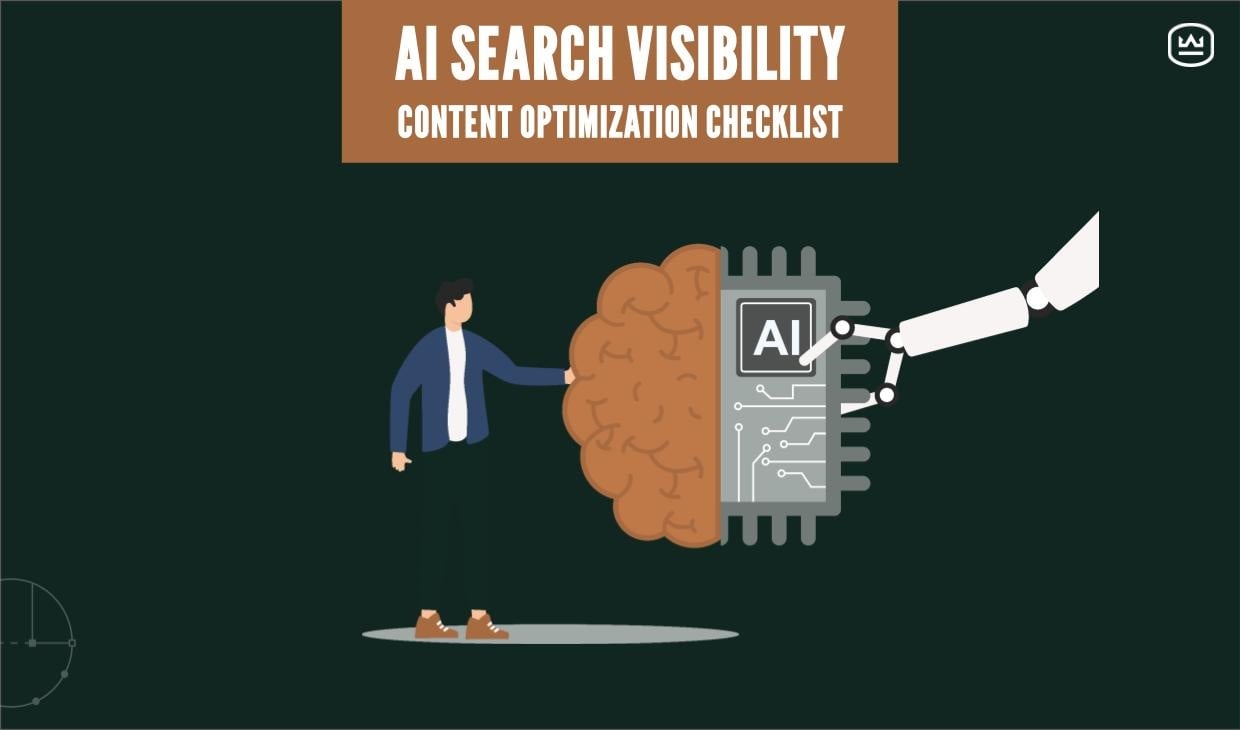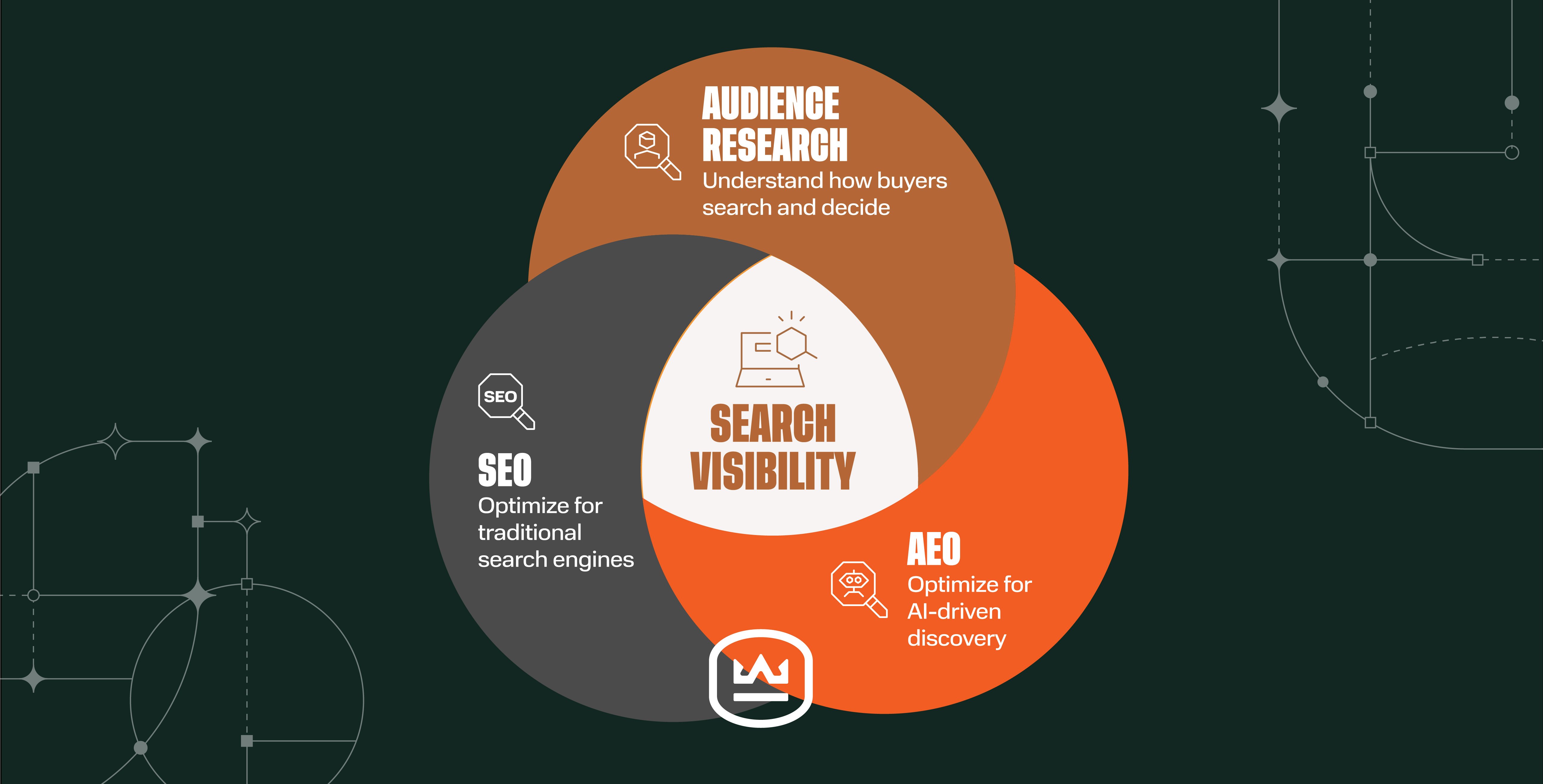Building the Ultimate Lead-Generating Industrial Website: Essentials You Can’t Overlook
Written by
Weidert Group has been developing websites for industrial manufacturers and other complex B2B companies for decades now, and we’ve seen them go from what was essentially a digital brochure years ago to what they are today: powerful tools that (when done well) attract, engage, and convert visitors into leads and customers.
As the first point of contact many of your prospects will have with your company, your website should accurately and positively reflect your brand, provide an exceptional user experience and address the specific needs of your audience.
Here’s a look at the key elements you need to build an industrial manufacturing website that jumpstarts a successful path for visitors to become customers.
- Intuitive Navigation: Guide Your Visitors
- Compelling Value Proposition: Speak to Their Pain Points
- Calls-to-Action (CTAs) That Get Responses
- Robust Content That Builds Trust
- Lead Capture and CRM Integration: Streamlining the Sales Process
- Search Engine and Mobile Optimization: The Basics of Visibility
- Accessible and Inclusive Design: Welcome Everyone
1. Intuitive Navigation: Guide Your Visitors
Don’t underestimate the speed with which a buyer will abandon your website (seriously, it’s about 3 seconds)! It’s crucial to make an instantaneous good first impression.
That’s why a very clear and intuitive navigation structure is critical; it helps visitors find what they need, quickly and easily. Like most of us, industrial buyers are pressed for time, and a confusing site organization could cause them to abandon your site and head for another.
- Simplify menus: Organize your site’s navigation so that it reflects your ideal prospect’s journey. The sites we develop don’t include “clutter” in their navigations; we make sure we present clear categories that guide visitors quickly toward the solutions or services they’re searching for
- Reduce friction: Slash the number of clicks it takes for a visitor to get where you know they want to go by eliminating unnecessary (and frustrating) steps. The fewer clicks required to get what they’re looking for, the better
- Have a logical link hierarchy: We know that the most important links should be in prominent positions on websites. For our industrial clients, that typically means making links like “Products,” “Industries Served,” and “Contact Us” apparent and easily accessible
- Segment navigation by buyer stage: We typically prioritize our clients’ leads that are just entering the "Consideration" stage, where prospects have narrowed down their list of potential vendor partners. One of the ways we do that is by presenting navigation categories such as "Industries Served," "Solutions," and "Resources,” all of which contain information that can help guide users from the Awareness to Consideration stage
- Encourage exploration: Include a Resources section with problem-based navigation categories and a prominent search bar. For example, manufacturers could use categories like “Design for Manufacturability” and “Case Studies” to interest visitors in multiple areas of your site
Pro Tip: Consider adding courtesy links—smaller, secondary links that allow returning users to quickly access key features like customer portals or support pages. Keep these to a maximum of three to maintain focus on primary navigation.
2. Compelling Value Proposition: Speak to Their Pain Points
In an increasingly crowded marketplace, your website has to answer prospects’ one critical question: Why should I choose you? Your value proposition has to be meaningful to your target audience and clearly communicate how your solutions address their challenges better than competitors do.
- Be clear, not jargon-y: Don’t use too much technical language that could alienate parts of your audience. Speak in common terms about the problems your products solve
- Share results: Use data or case studies to demonstrate the actual benefits your customers can expect. There’s perhaps nothing more powerful than before-and-after examples that show what you can do
- Use industry-specific messaging: Customize your value proposition to reflect the needs of different industries. One of our clients develops repurposed shipping container solutions, and their website breaks down the value their products deliver to each individual market they serve
- Highlight your R&D efforts: Include content like “2024 Review: The Latest in Food Packaging Tech & Equipment” to demonstrate ongoing innovation. This shows prospects that your company is a thought leader at the forefront of industry advancements
By clearly articulating the unique value you bring to customer relationships, you establish credibility and set yourself apart as an organization that can help them succeed.
RELATED: What Is User Experience in B2B Website Design?
3. Calls-to-Action (CTAs) That Get Responses
A great website doesn’t just inform—it motivates visitors to action, and your CTAs are the key to moving visitors through the sales funnel.
- Use action-oriented language: Phrases like “Request a Quote,” “Get Our Product Guide,” or “Schedule a Consultation” provide clear next steps
- Tailor to the buyer’s journey: Provide multiple CTAs, each catering to visitors at different stages, from Awareness and Consideration to Decision. That might mean a CTA like “Learn More” at the Awareness stage, “Take the Assessment” at Consideration, and “Talk with Our Experts” at the Decision stage
- Test and optimize: Our team doesn’t just rely on instincts; we perform A/B testing on CTAs to learn which phrasing, placement, or design gets higher conversions
Effective calls to action help visitors transition from passive browsing to meaningful engagement.
4. Robust Content That Builds Trust
Manufacturing buyers typically conduct a fair amount of research before reaching out to a potential vendor partner, especially when the products they’re looking for represent significant investments. Your content should position you as a thought leader and problem solver that not only “sells things,” but that acts as a valuable partner in their success.
- Offer educational resources: Publish blog articles, videos, whitepapers, and FAQs that feature your subject matter experts to address common questions and challenges
- Showcase your expertise: You’ll see on our website that we use case studies and testimonials to demonstrate how our solutions have delivered results for real customers. These two tactics turn our clients into advocates and can be even more powerful than our own words
- Niche content: Tackle industry-specific topics to capture the attention of buyers in specialized sectors. For example, instead of writing an article about advancements in industrial braking systems that covers the gamut of vehicle types, narrow your focus to how those advancements are making agricultural equipment more responsive and energy efficient. Do the same for your other vertical markets
- Use blog articles as entry points: Optimize articles with relevant long-tail keywords. For example, blog topics like "Advancements in Liquid Packaging Systems" could drive highly targeted traffic directly to your site
Providing valuable, in-depth content not only boosts your search engine rankings but also fuels searchers’ confidence in your organization.
5. Lead Capture and CRM Integration: Streamlining the Sales Process
Converting website visitors into leads requires a smooth, frictionless process. Make it easy for potential customers to digitally raise their hands by designing simple and intuitive lead capture forms.
- Present minimalist forms: We’ve learned that asking too much will turn people away, and that in most cases it’s best to ask only for essential information, such as name, email address, and one or two qualifying questions
- Be selective on “gating” content behind forms: More and more (especially in the age of AI) we’re seeing that it’s often best practice to offer content “free” – requiring no exchange of information. Best practice is to only require contact information on high-value information like live webinars, original research reports, or courtesy consultations
- Ensure seamless integration: Connect your website with your CRM system (if you’re using HubSpot, it’s automatically integrated) to streamline follow-ups, measure attribution, and manage leads effectively.
- Leverage lead scoring, segmentation, and closed-loop reporting: Use the data in your CRM to segment and prioritize your leads. Use that base to focus your website and its content on those that represent your ideal customers. Close the loop by measuring how well your site is bringing in your best prospects, and how effectively your sales team is doing at turning them into customers
Your website doesn’t operate in a vacuum—it should be part of a larger strategy that integrates seamlessly with your CRM. With the right CRM integration, you can turn website interactions into actionable insights that improve revenue. With the right tools in place, your website becomes a hub for generating, nurturing, and converting leads.
6. Search Engine and Mobile Optimization: The Basics of Visibility
If your website isn’t optimized for search engines or mobile devices, you’re missing out on a significant portion of potential traffic.
- Follow SEO best practices: Include relevant keywords, ensure fast page loading times, and optimize metadata for better search rankings. Don’t, however, make the mistake of “writing for SEO” — write for your audience while considering relevant keywords
- Develop a mobile-first design: With more than half of web traffic coming from mobile devices, your site has to look great and perform flawlessly on smaller screens
When your website is easily discoverable to all users and presents a great brand experience, you maximize your reach and improve the overall user experience. In addition, search engines will not offer up your website in results if it’s not optimized for these users.
7. Accessible and Inclusive Design: Welcome Everyone
Accessibility isn’t just a best practice — it’s a legal and ethical obligation. An inclusive website design ensures that all users, including those with disabilities, can interact with your content.
- Allow easy keyboard navigation: Make all interactive elements functional without a mouse
- Include alt text for images: Provide descriptive text to support visually impaired users that allows them to understand what the picture is showing
- Opt for readable fonts and high contrast: Choose typography and color schemes that are easy on the eyes. Pairing colors that are too close on the spectrum make it difficult to distinguish one from the other
Investing in accessibility reflects positively on your brand and creates a welcoming experience for all visitors.
Conclusion: A Website That Works for You
A powerful industrial manufacturing website is more than just your digital storefront—it’s an effective tool for attracting, engaging, and converting your ideal customers. By focusing on intuitive design, compelling content, and strategic optimization, you can transform your site into a lead-generating machine that adds revenue to the top line and improves the bottom line.
Learn more about Weidert Group’s approach to building powerful B2B websites here!
Want to stay current on lead generation and other industrial marketing and sales growth strategies? Subscribe to The ChangeOver Podcast by Weidert — it’s where we discuss hot topics and tactics that are working now to help businesses like yours succeed in today’s dynamic buying environment.
Subscribe To Our Blog
Information. Insights. Ideas. Get notified every time a new Weidert Group blog article is published – subscribe now!
You May Also Like...

Search Engine Optimization
How Falcon Rebuilt Industrial AI Search Visibility in 2025

Search Engine Optimization
The New Search Visibility Checklist for AI-Era Content Marketing

Search Engine Optimization
SEO Isn’t Dead. It’s Evolving: How B2Bs Can Stay Visible in the Age of AI
Accelerate Your Growth with
Weidert Group
If you’re ready to explore a partnership, request a personalized consultation with our team.

